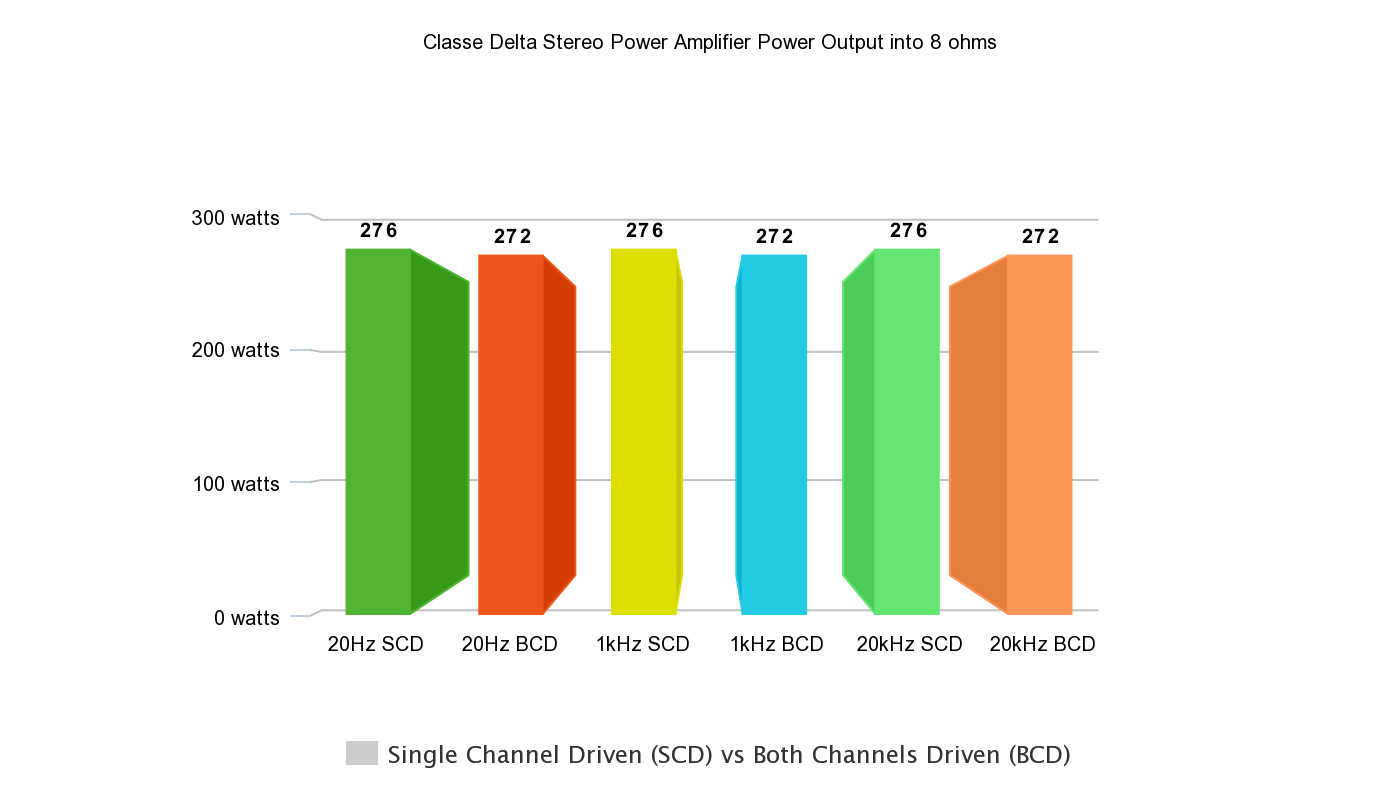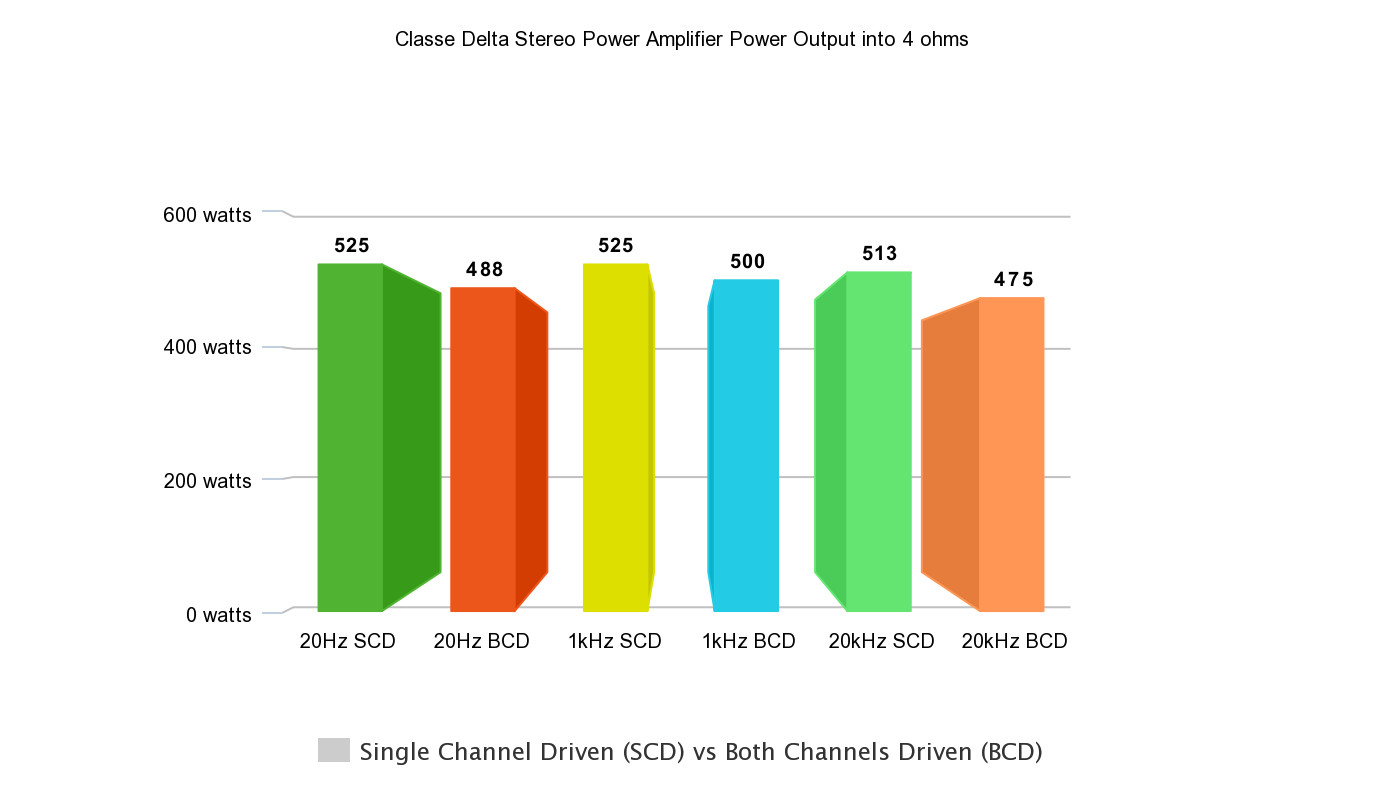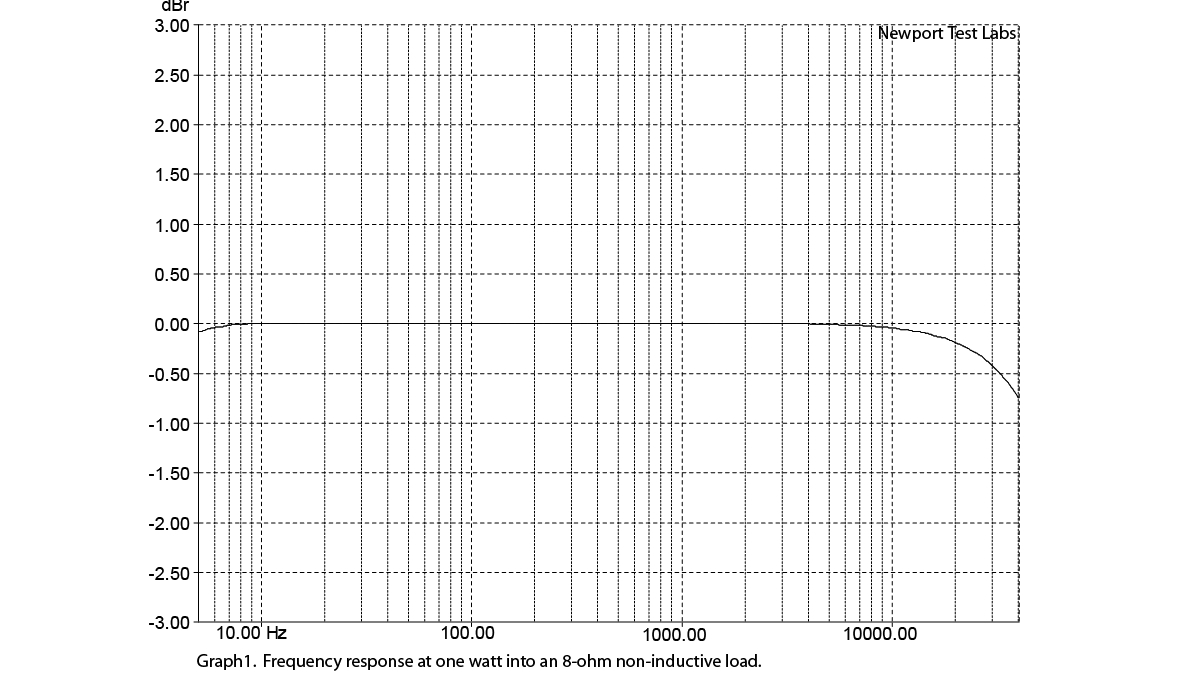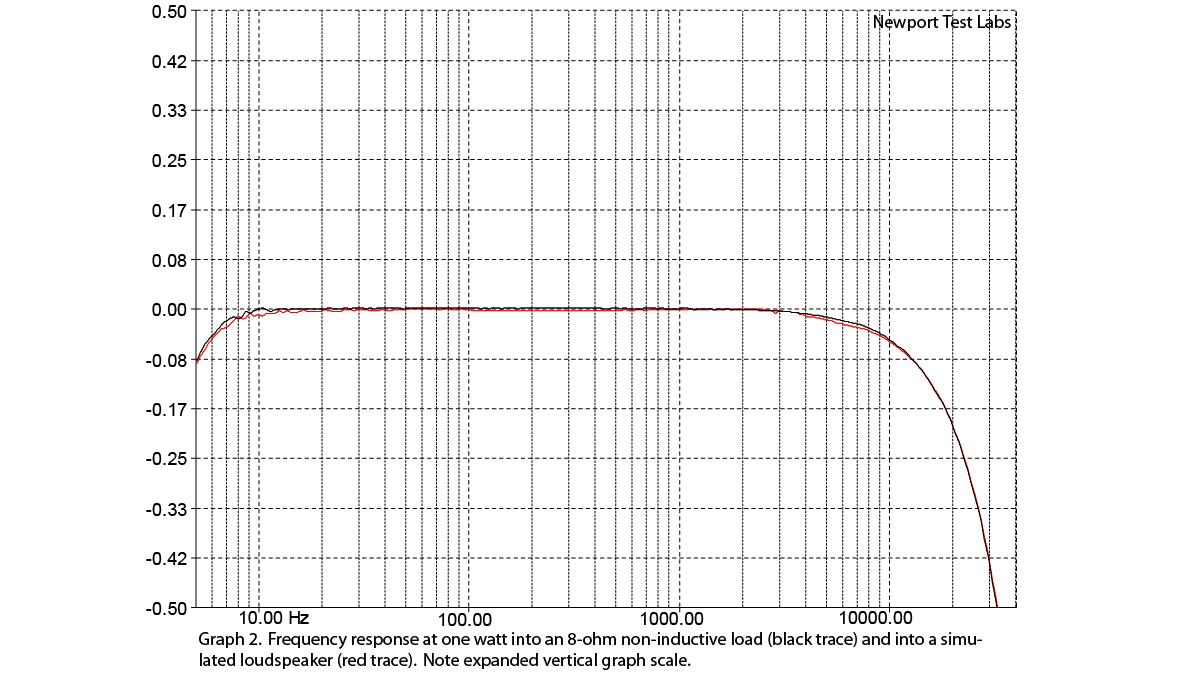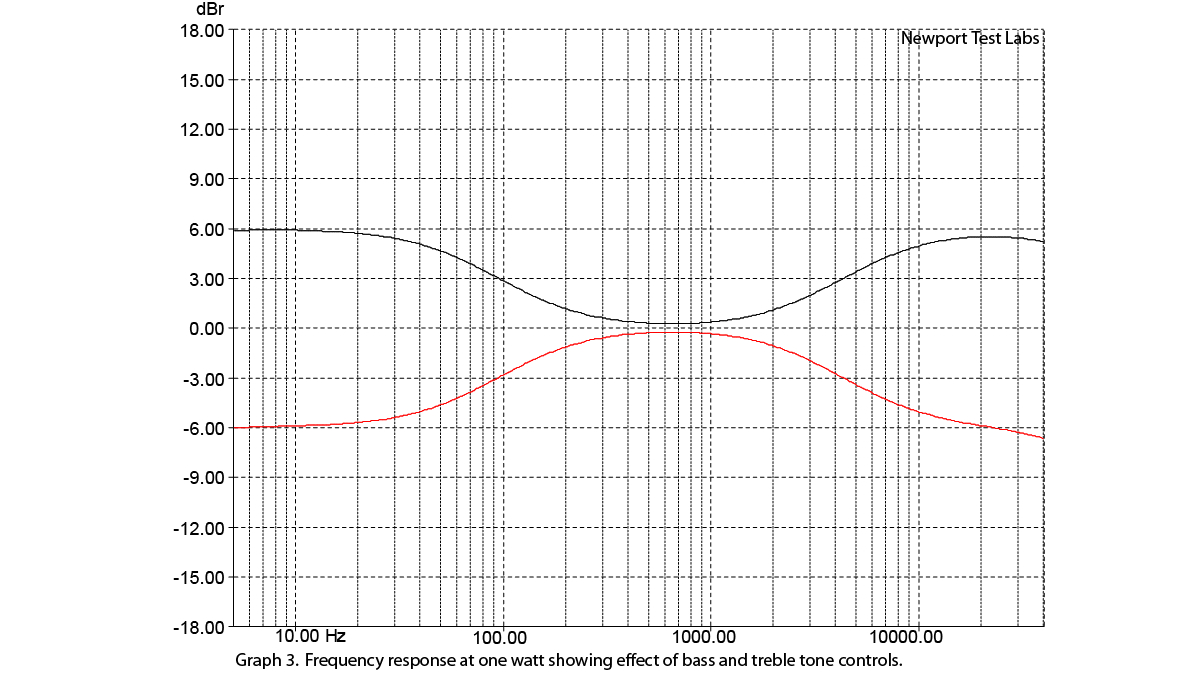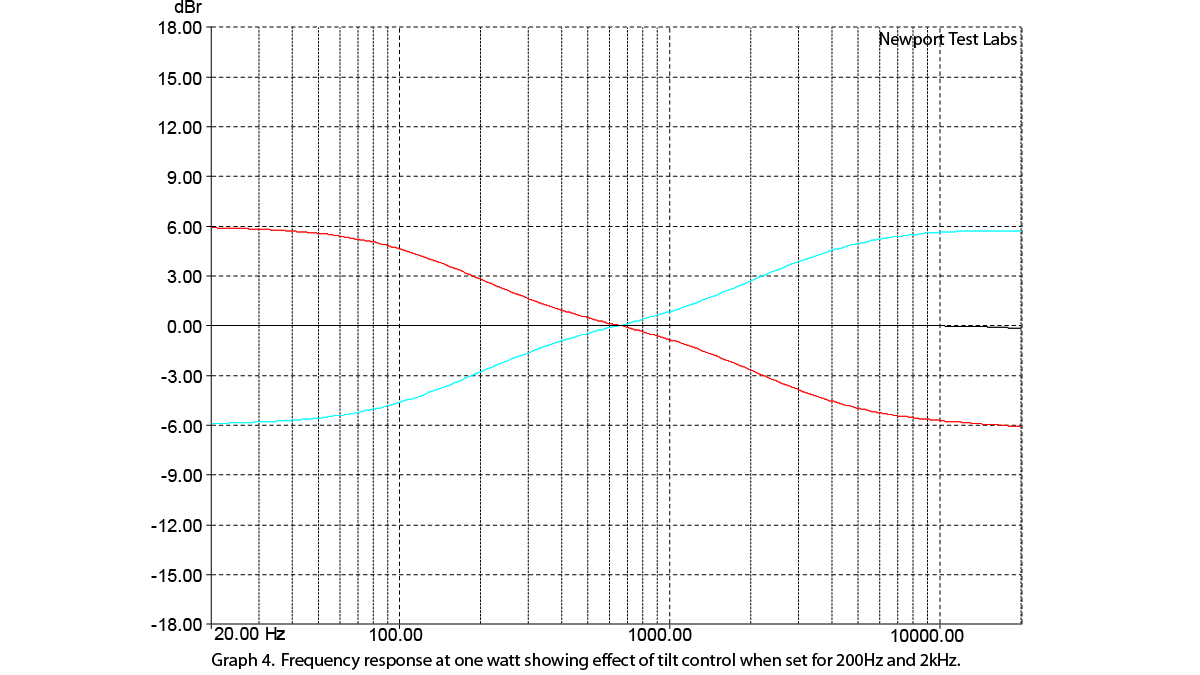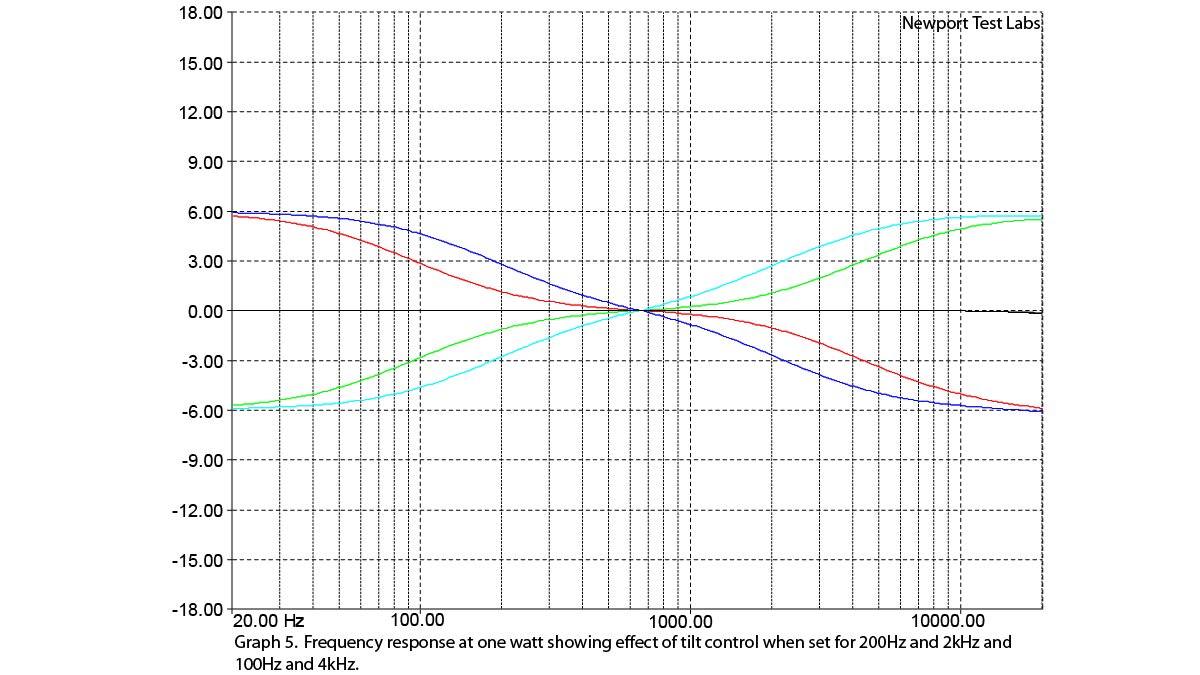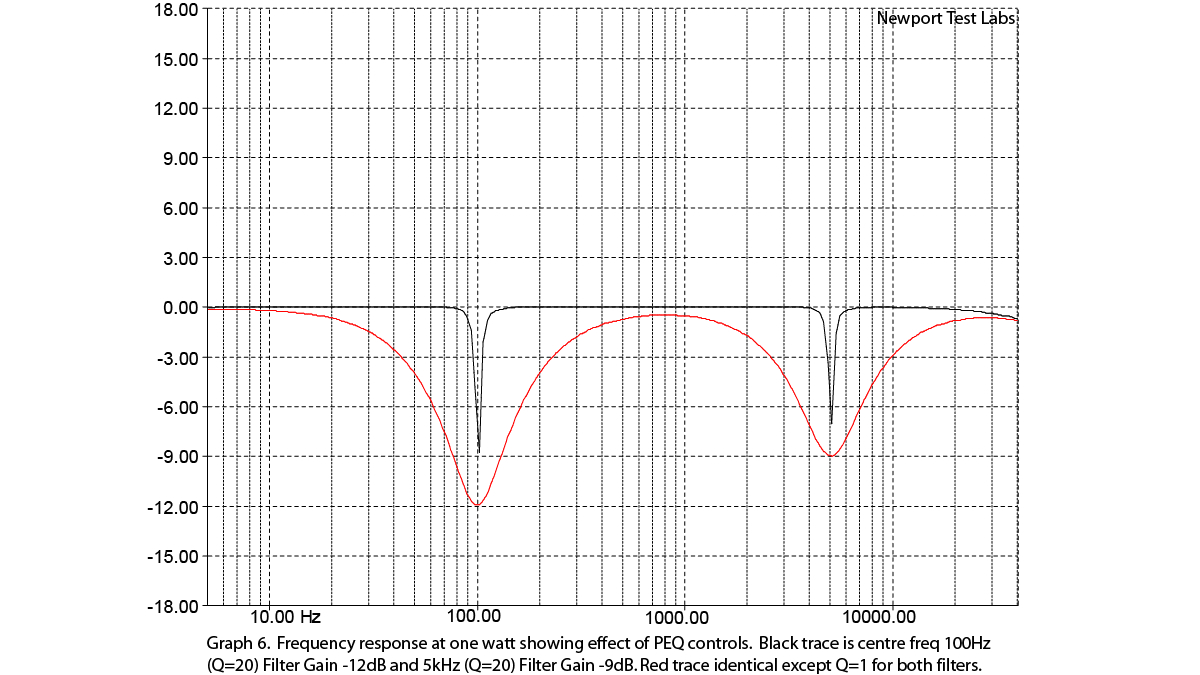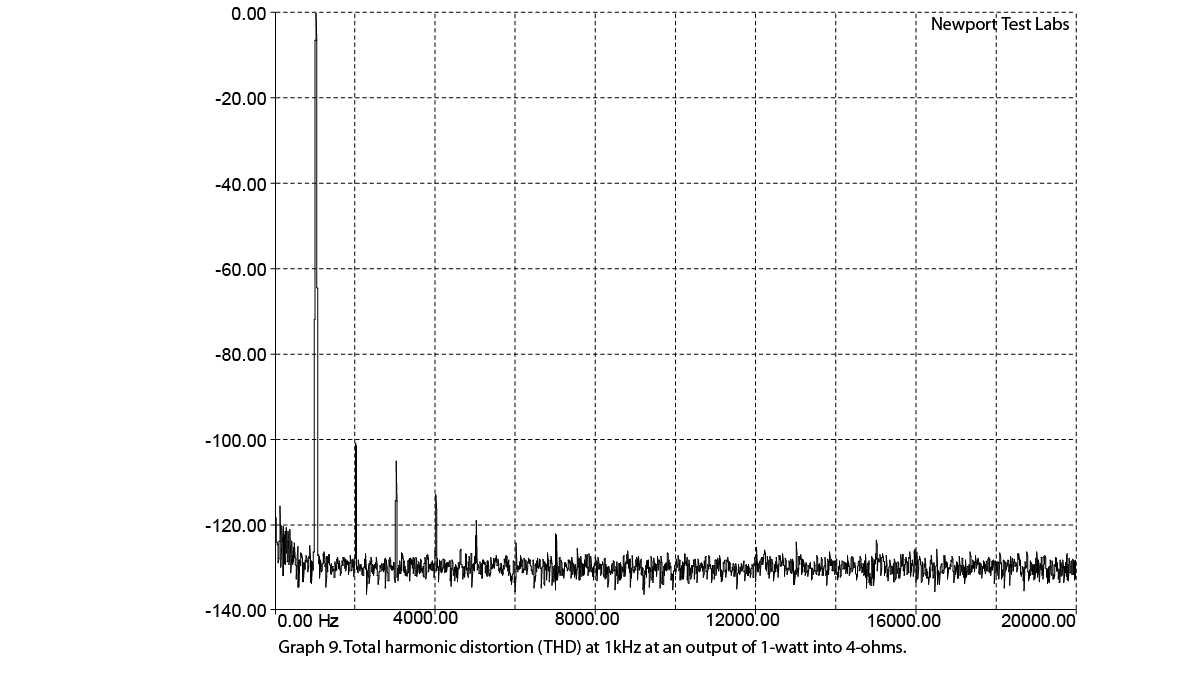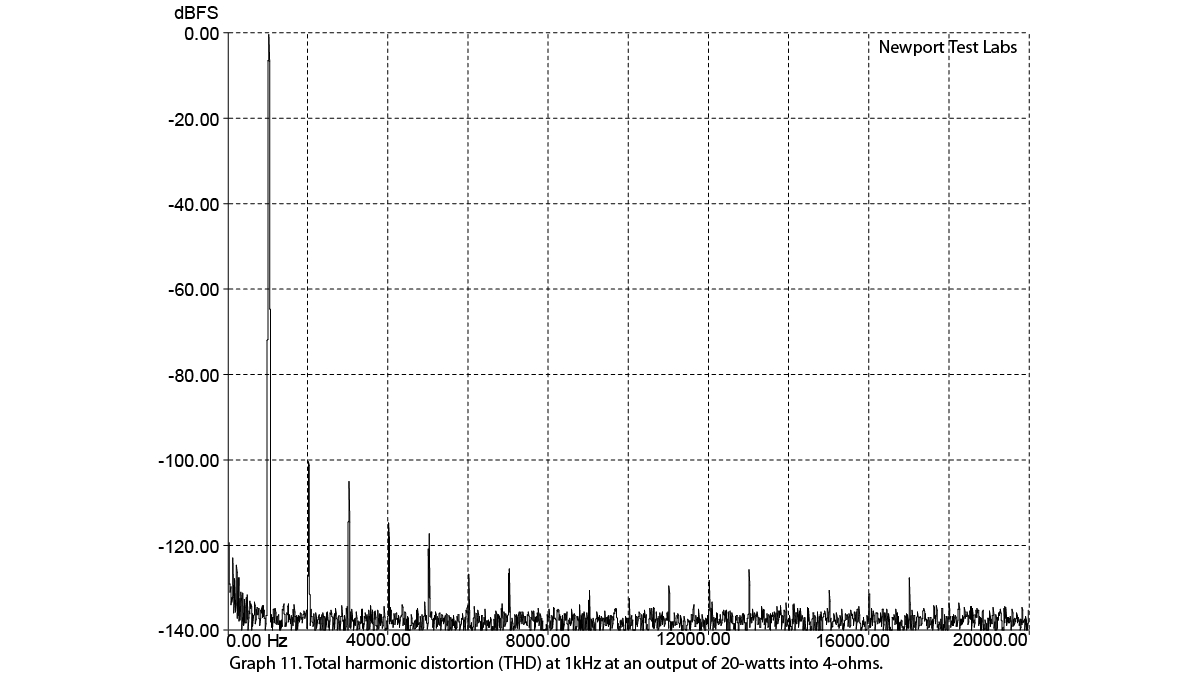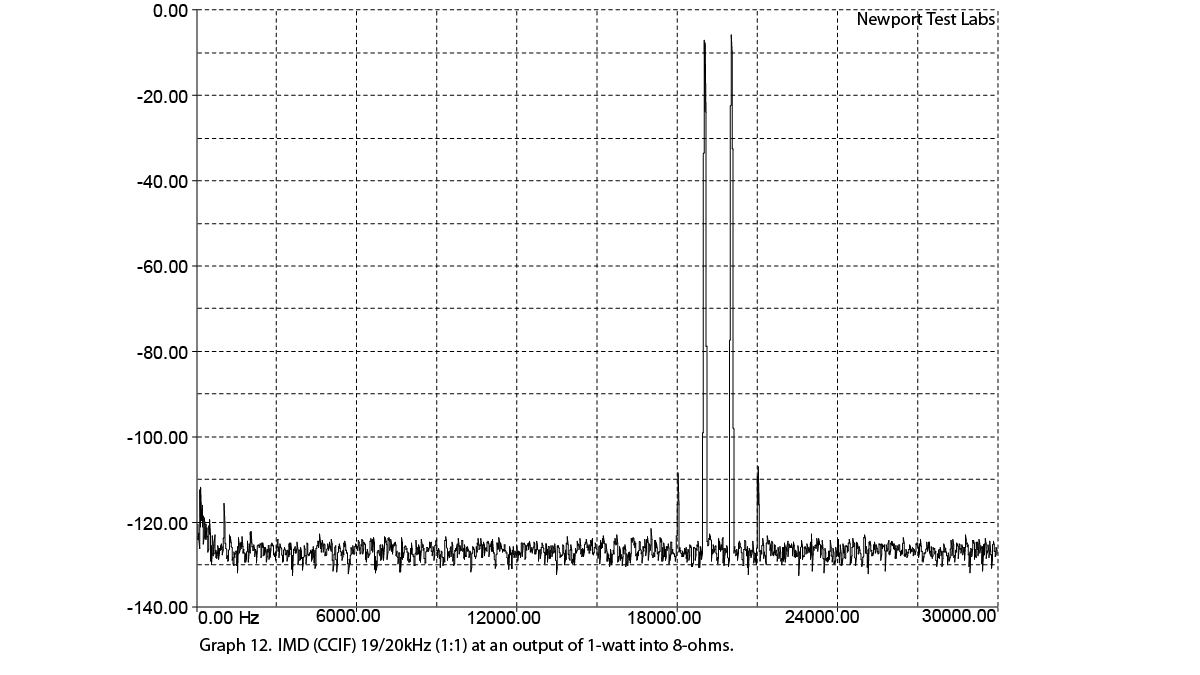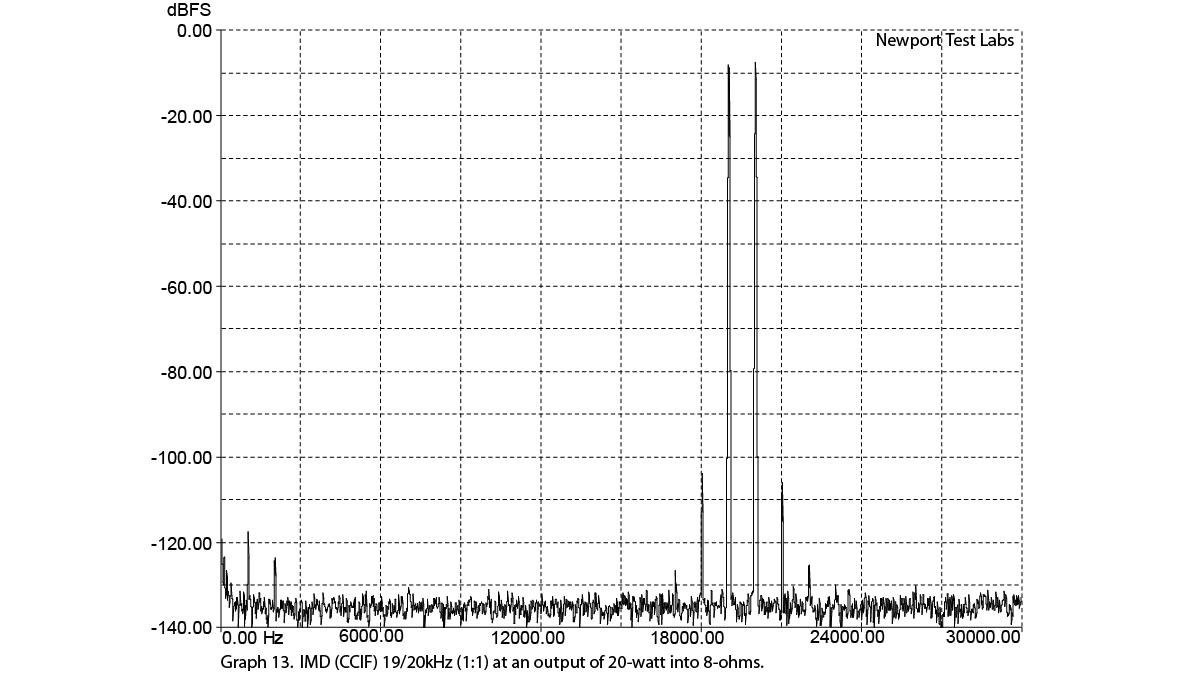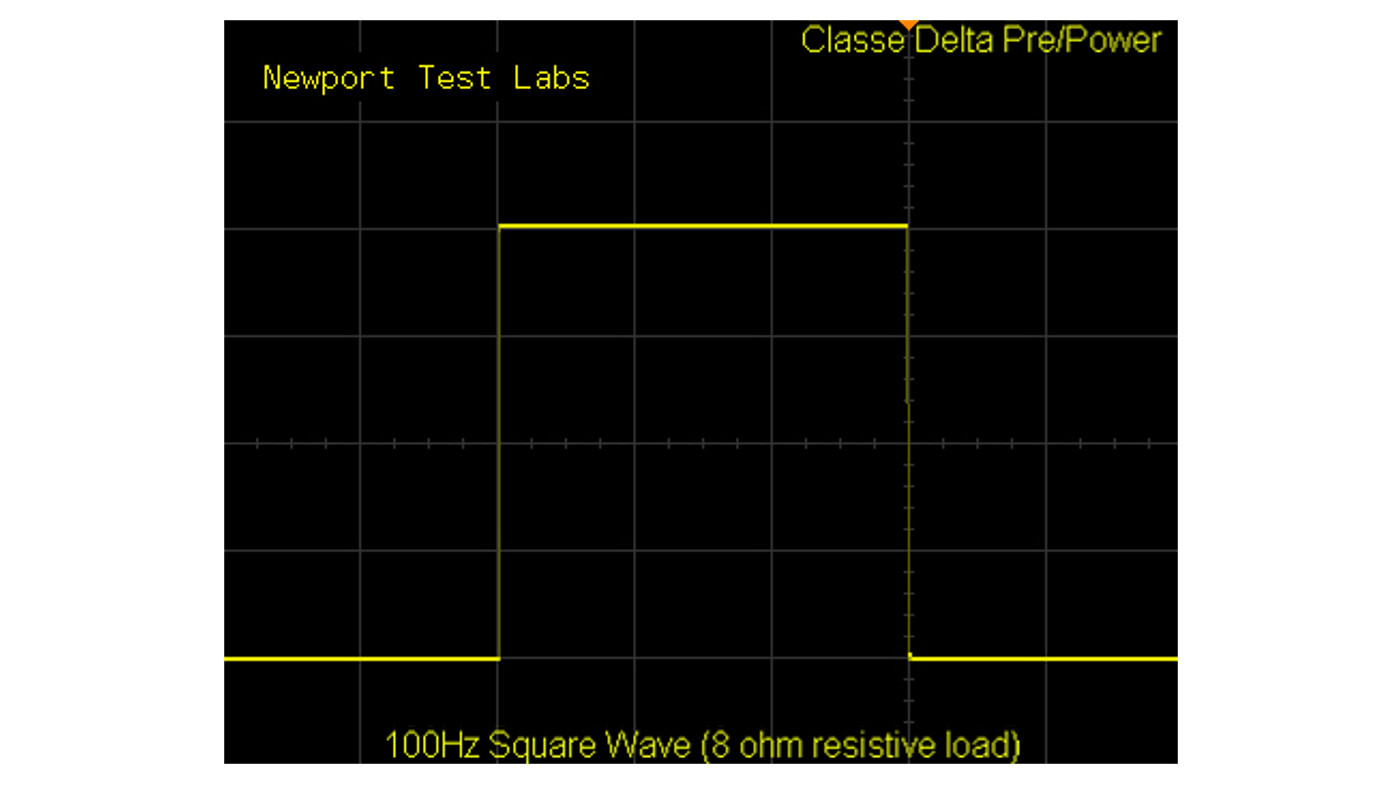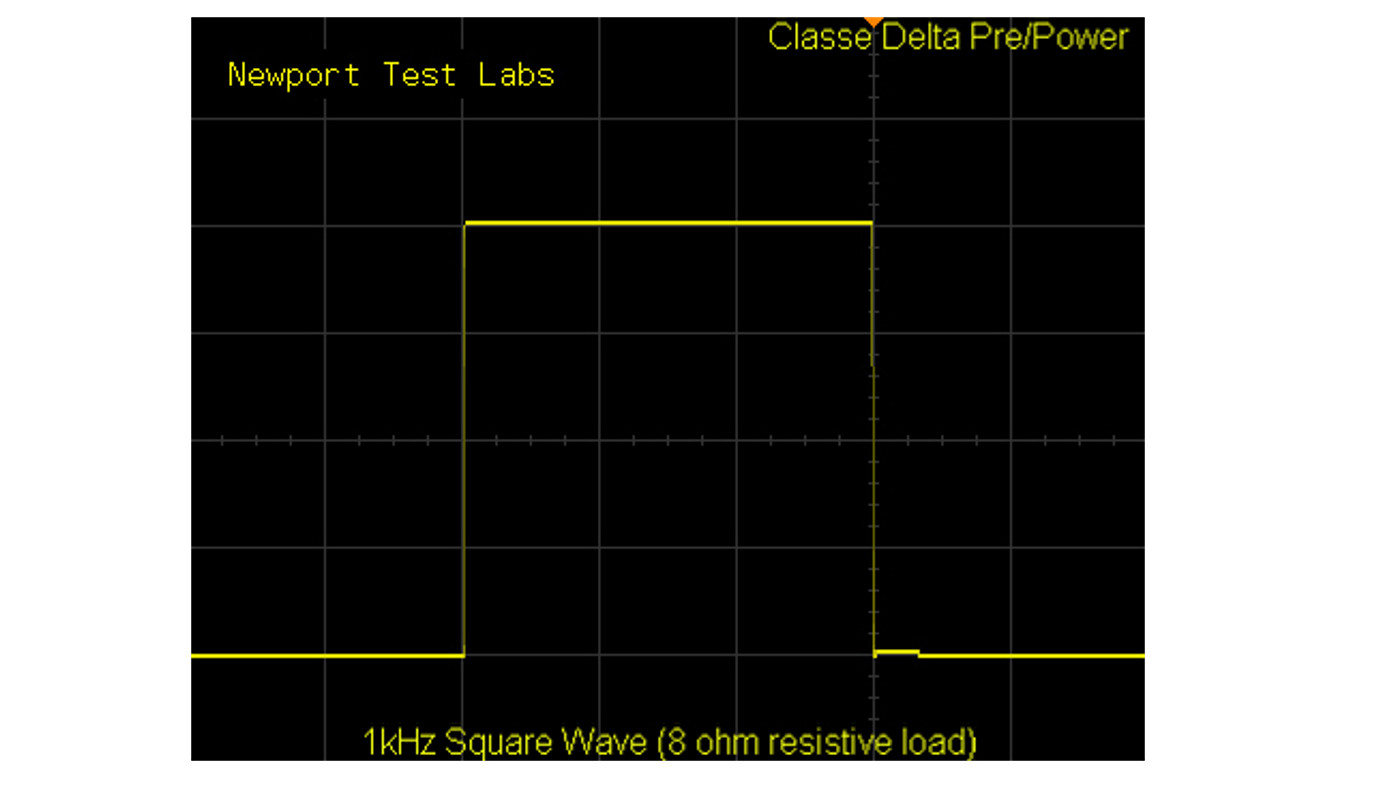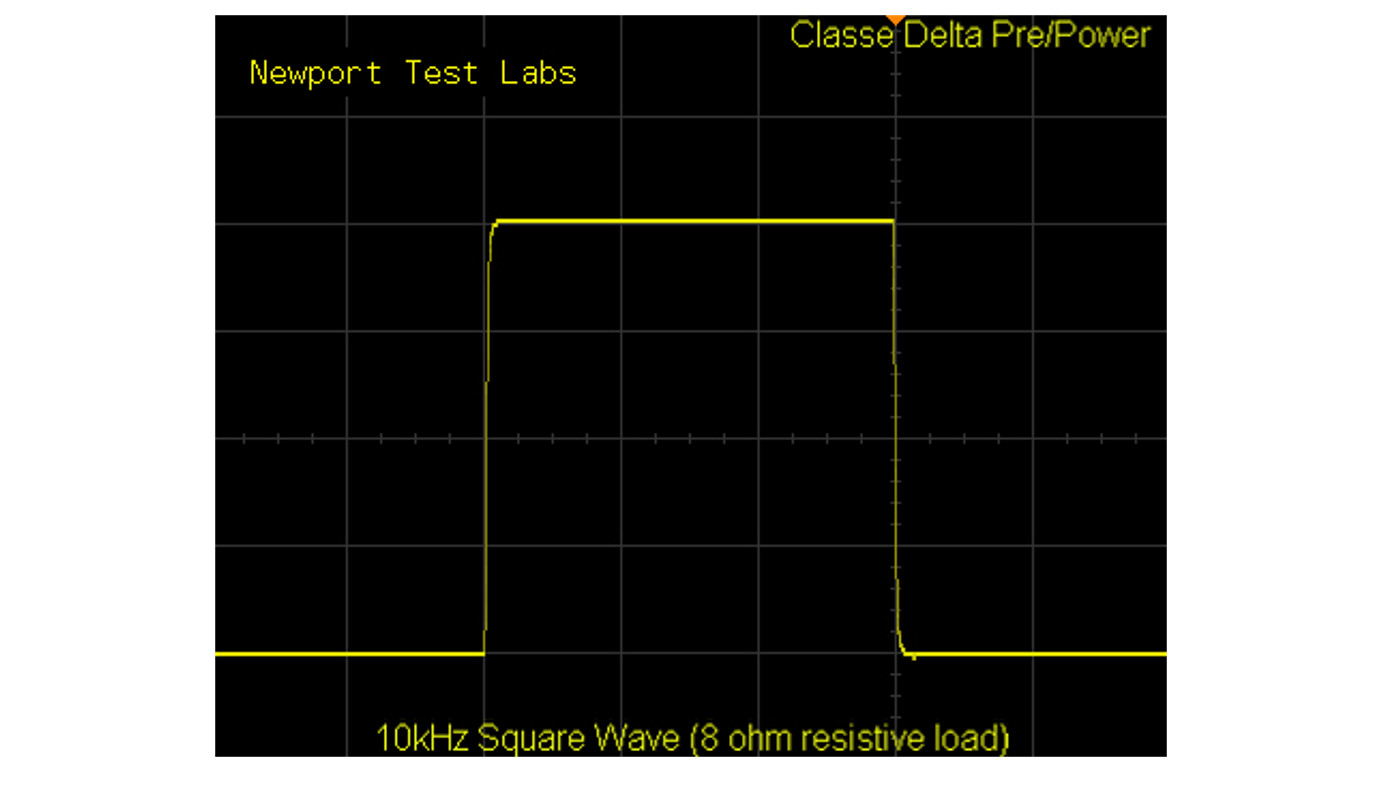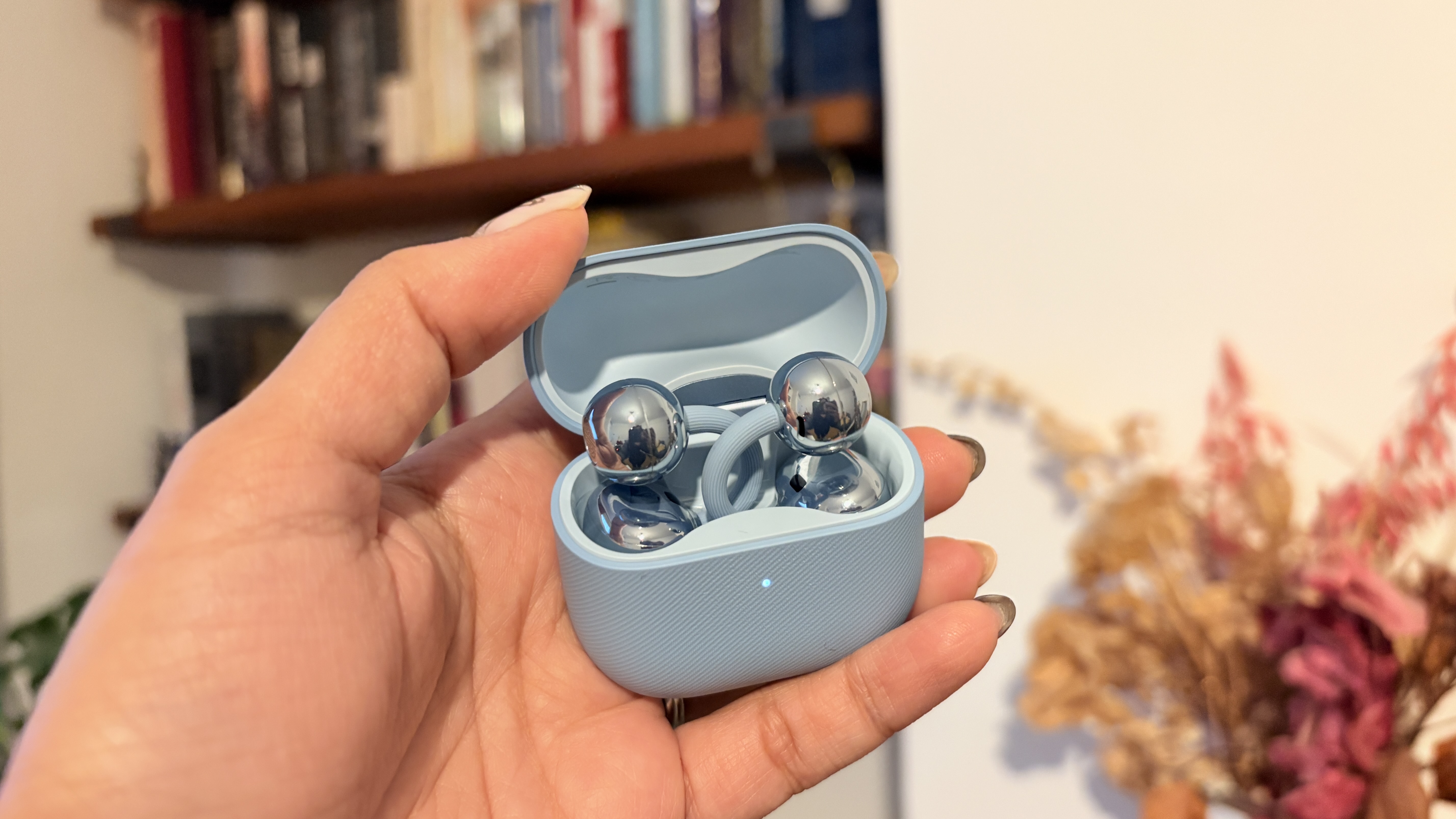What Hi-Fi? Verdict
The Classé Pre and Classé Delta Stereo honour their brand name in every one of its meanings.
Pros
- +
Feature-packed
- +
Impeccable sound
- +
Awesome performance
Cons
- -
Nothing really...
Why you can trust What Hi-Fi?

This review and test originally appeared in Australian Hi-Fi magazine, one of What Hi-Fi?’s sister titles from Down Under. Click here for more information about Australian Hi-Fi, including links to buy individual digital editions and details on how to subscribe.
TESTED AT:
Classé Delta Pre £9999 / $9999 / AU$16,900
Classé Delta Stereo £11,999 / $12,500 / AU$19,900
If you have even a passing knowledge of the French language, you will know that Classé’s company name is pronounced not with a silent ‘e’, as in ‘class’, but with the final ‘e’ pronounced as an ‘a’, as in Class-A.
This is not because Classé was founded in a French-speaking province in Canada (although it was, in fact, founded in Montréal, which has more French speakers than English speakers), but because the company’s very first product – the DR-2, a 25-watt amplifier designed and built by the company’s sole founder, David Reich – was, in fact, a Class-A amplifier.
That’s rather appropriate, because the Classé Delta Stereo power amplifier that’s one of the two products reviewed here is also a Class-A amplifier – or at least it is up to a power output of 12.5-watts, after which it transitions to being a linear Class-A/B amplifier up to its rated output of 250-watts per channel into 8Ω (and 500-watts into 4Ω and 350-watts into 2Ω) and the Classé Delta Pre operates completely in Class-A. (For technical details about the differences between Class-A and Class-AB amplifiers, see the section of this review titled ‘Amplifier Classes.’

Classé Delta Pre
Although it is only a two-channel pre-amplifier, the Classé Delta Pre has all crossover controls and time delay controls (and more!) that you would expect to find in a full-featured home theatre component: very few two-channel pre-amplifiers provide these.
You can also configure for either one or two subwoofers and when you tell the Pre that you’re using a subwoofer (or two) a dialogue opens that allows you to set the crossover frequency, crossover slope and, if you’re using two subwoofers, whether you’re using them in stereo or as two mono subs. It also allows you to delay the signal to the subs so you can time-align the signal to be in sync with your speakers.
Rather trickily, if your left and right speakers happen not to be equidistant from your listening position, you can use this delay circuit to delay the audio signal going to the speaker closest to you in order to sync the left and right channels. You can do this even if you are not using a subwoofer.
The latest hi-fi, home cinema and tech news, reviews, buying advice and deals, direct to your inbox.
You can also choose to high-pass the signal going to your main speakers, leaving the subwoofer(s) to handle all the bass, or send a full-range signal to them, so both main speakers and subwoofer(s) are operating at the same time. All this enables extraordinary flexibility when setting up your system.
The USB port on the front panel of the Delta Pre is specifically designed to work with portable media devices made by Apple ( ‘Pad, ‘Pod and ‘Phone ) accepting data up to 96kHz, as well as providing power for them. It’s also able to be used to load firmware updates downloaded onto a USB stick from Classé’s website.
The Classé Delta Pre’s volume control is not a variable potentiometer, which allows almost infinite adjustment of volume level, but a stepped attenuator, so you have to select a pre-determined volume level. Unlike many such devices, which offer a fairly limited number of levels, the Delta Pre’s attenuator has a 107dB operating range (from –93dB to +14dB) and over the most critical section you are able to adjust the volume in 0.25dB increments.
Says the Owners’ Manual: “Most stepped attenuators offer too few steps, causing the listener to choose a level that is a bit too soft or too loud, not just right. The volume display on the touchscreen reads in 0.25 dB increments, thereby closely approximating a continuous volume control, allowing the desired level to be selected precisely as required for critical listening.”
In an age where it’s rare for high-end components to offer any type of tone control at all, the Delta Pre offers three different types of controls for tone, although one of these three is aimed more at compensating for deficiencies in your listening room’s acoustics than adjusting tone per se.
The more straight-forward ‘tone’ controls on offer are bass and treble tone controls, whose operation is so ubiquitous that they need no further explanation, and a ‘Tilt’ control, which is rare enough that it does require an explanation (at least it does unless you’re familiar with pre-amplifiers manufactured by UK manufacturer Quad, which popularised this particular circuit).
The ‘Tilt’ control actually ‘tilts’ the Delta Pre’s frequency response away from flat, so that if you ‘tilt’ it one way, you get more bass and less treble, while if you ‘tilt’ it the other way, you get less bass and more treble. It operates a bit like a child’s see-saw.
This sounds a bit like how bass and treble controls work except that whereas with tone controls you can increase or decrease bass without affecting treble, the tilt control always affects both ends of the frequency spectrum.
However, Classé has improved on the original implementation of the ‘tilt’ control by allowing you to specify a range of frequencies that will not be affected when you otherwise ‘tilt’ the response. To my mind, this is a huge and useful improvement.
Classé has, however, been fairly conservative regarding the amount of boost and cut available, providing only 6dB rather than the more usual 10–12dB. This too, to my mind, is very sensible. If you need more than 6dB there’s something seriously wrong with one or more of the other components in your system.
As for the other ‘tone’ control, the Classé Delta Pre has a two-channel, five-band parametric equaliser (PEQ) built in that allows you to construct up to five different filters for each channel. One or more of these would most appropriately be used to compensate for unwanted room effects.
If, for example, you had a standing wave that resulted in your room accentuating frequencies at 113Hz by 2.5dB, you could build a filter that provided 2.5dB of cut at 113Hz. Such parametric filters are widely available on powered subwoofers, but I can’t recall seeing one previously on a preamplifier.
Classé’s Owners’ Manual (which is absolutely excellent, by the way, and well worth reading solely for the information contained in it) advises first that “These filters should be constructed based upon audio measurements made by a well-qualified acoustical engineer” and then follows up by stating: “These powerful filters are made available in a completely manual fashion to help your professional installer give you the best listening experience possible.”
Whilst I agree that a professional skilled in these measurements will be able to deliver a better end-result than the average end-user, I do have to say that with the number of loudspeaker and room acoustics measurement packages now available, it is possible for average end-users to do a pretty good job provided they do some research into the “dos” and “don’ts” of equalisation before starting out. The actual process would not be completely dissimilar to the one used for subwoofers, which is described here.
Classé has been particularly sensible with the PEQ circuit by limiting the boost to just 3dB per band, but enabling 20dB of cut per band.
Because Classé uses digital signal processing (DSP) to provide these tone, tilt and PEQ functions (as well as several others) you should be aware that using the DSP will ‘downgrade’ many of the specifications claimed for the Delta Pre. For example the ‘native’ frequency response of the Delta Pre extends from 1Hz to 2MHz but if the DSP is in-circuit (even if it’s not actually doing anything at all) the frequency response is reduced to 10Hz to 84.5kHz. Other differences are that distortion increases from 0.0004% to 0.002% and noise increases from 133dB to 105dB. So to ensure maximum sound quality, you’ll need to use the Classé Pre’s ‘Bypass’ mode.
The Classé Delta Pre has two muting modes. One mode mutes the level by a specific amount that you can preset, such as 20dB or 30dB. Classé calls this mode ‘Dampening’. The other mode allows you to ‘mute’ the volume to a specific level. I put the word ‘mute’ in inverted commas because if you were listening at –20dB and you had the muting set to –20dB, nothing at all would happen. However, if you set it to –93dB, the sound would totally disappear.
Once you have used the Menu to select which of these two modes you’d like to use, the ‘Mute’ control always uses that mode (though you can always change it to the other via the Menu). I would have liked having the two modes always available, because this would enable me to either temporarily drop the level of sound for a while, yet still be listening to the music, or totally mute the sound so I could take a phone call. What I elected to do was activate the Dampening mode and whenever I wanted a full mute I’d just switch to an unused input. Best of both worlds!
The Standby button also serves as a ‘Data Save’ mechanism. Each time the Standby button is pressed, the Delta Pre will save any custom settings you’ve made. It does not, however, save any adjustment you have made to system balance (though phono balance will be remembered) nor will it save the volume level you were using – this defaults to either –30dB or to whatever other level you have pre-set.

Input and output facilities
I can’t really imagine anyone ever wanting more physical input facilities, either analogue or digital, than are fitted to the Classé Delta Pre.
For analogue sources you get two pairs of balanced line-level inputs (XLR) plus two pairs of unbalanced line level inputs, as well as a pair of unbalanced phono inputs. The phono inputs can be switched for moving-coil or moving-magnet, between low and high gain and offer an extended range of loading options (see Specifications panel). And if a single phono input is insufficient for your needs, you can re-purpose the XLR2 balanced input to be a phono input. All these inputs can be routed to the output entirely in the analogue domain, or via the digital domain, as mentioned previously.
Digital audio inputs include USB (PCM up to 32-bit/384kHz and DSD up to 256), AES/EBU (PCM up to 32/192), and three (each) coaxial and optical connections (all PCM up to 32/192).
The USB input supports native DSD but only after you’ve downloaded and installed a Windows Thesycon/Classé USB driver into your server. (Without the driver, you get DoP). Plus of course there’s an Ethernet connection, so you can get files from anywhere on your network.
In all the Classé Pre has five outputs, all with balanced and single-ended options. There are outputs for the main left and right channel and a subwoofer; the other two outputs (Aux 1 and Aux 2) can be configured to mirror the main stereo channels for bi-amping, or one can be used to send a high-passed signal to a second sub, as I explained earlier in this review.
HDMI? No, it’s not on the standard Classé Pre, but you can add a 4K-capable HDMI module that will give you four HDMI inputs and one HDMI output to the unit
But what of any wireless options? There are no specific options but if you have connected the Pre to your network, you could use Apple AirPlay because the Classé Pre will deliver content from any iOS device that’s connected to the same network.
There’s no Bluetooth and frankly I don’t think there should be on a component of this quality. The quality of an audio signal sent wirelessly (via Bluetooth or any other wireless system, including AirPlay) will always be inferior to the quality of a signal sent via wire. And if you really, really want wireless delivery, there are other alternative means of adding this functionality via external wireless devices. But, as I said, why would you bother?
CAN-Bus input/output
Classé’s CAN-Bus (Controller Area Network) allows multiple Classé components to be connected together for simultaneous operation.
Using the CAN-Bus Input and Output connectors, the Classé components can be daisy-chained together and controlled via the CAN-Bus interface to create a “global” network that delivers system-wide status information and shared operational features, all through the Classé Pre’s touchscreen display.
When configured correctly it will display status information for every connected unit, allow the Delta Pre to automatically switch to the correct input when a Delta series source component starts playback, adjust the global display brightness, configure the entire system to go in and out of standby at the touch of a button and/or bring individual components in and out of standby, and mute any connected unit.
Remote controls
An infra-red remote control is supplied as standard with the Delta Pre (not always a given, these days, with many manufacturers charging extra if you want a remote). The remote not only allows you to adjust volume, select inputs, and navigate the menu system on the Pre itself but also provides basic transport controls for USB and AirPlay-connected sources.
You can also remotely control the Delta Pre with Classé’s free App which does everything the infra-red remote can do and more – but you do have to have the Delta Pre connected to your home computer network in order to be able to use this App (which is available for IOS and Android).

Classé Delta Stereo power amplifier
That louvre-looking window that dominates the front panel of the Delta Stereo Power amplifier is actually the air intake for what Classé calls (and has trademarked) its “ICTunnel”, with the “IC” bit not standing for Integrated Circuit, but for “Intelligent Cooling”, which the company claims “removes heat from the amplifier by pulling cool air through the intake on the front panel.”
“Pulling cool air?” Professor Julius Sumner Miller would be turning in his grave. “The air is being pushed into the amplifier!” he’d be shouting down from the heavens. Which is true.
The low noise fan inside the Classé Delta Stereo power amp is creating a localised low-pressure area within the amplifier which the air inside your room, being at higher pressure, is rushing into the amplifier to fill, in accordance with nature’s abhorrence of a vacuum.
Like quite a few manufacturers of high-power amplifiers, Classé has elected to minimise the amount of heat-sinking required (and remove it from being located externally, as it would otherwise have to be) by using a fan to remove the heat from the internal heat-sinking. As for the “intelligent” reference, this simply references the fact that the fan only turns on when required, and only runs as fast as required to remove excess heat.
Where is that heat removed to? If you look around the back of the amplifier you’ll see the fan itself, which exhausts via the rear panel. So as well as not obstructing the intake on the front panel, which would be unlikely, you also have to make sure the exhaust vent on the rear panel is not obstructed in any way.
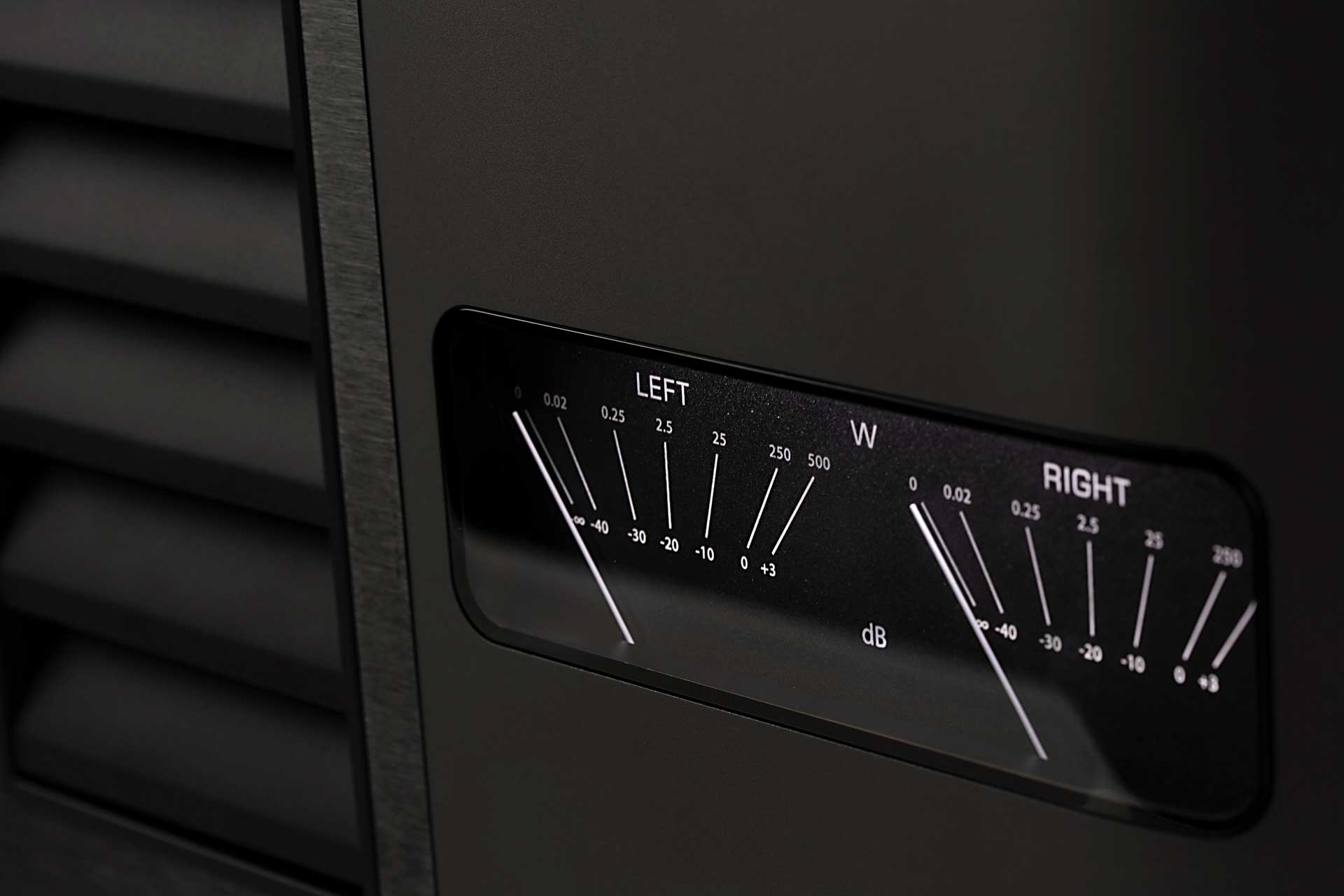
The next most obvious feature of the Classé Delta Stereo’s front panel are those two power output meters, which will show power output in watts (but only if your loudspeakers present a pure 8Ω resistance to the output terminals). Because most loudspeakers do not present pure 8Ω resistance in most cases the output power level shown will only be an approximation.
Classé suggests that you instead use the meters to determine if the amplifier is running in its Class-A mode or its Class-AB mode, with the Owners’ Manual advising that: “A good rule of thumb is that when the pointer is below/left of vertical the amplifier is operating in Class-A.”
The two meters are back-lit, with that lighting able to be switched through three different levels or turned off entirely.
Despite reading output power, the meters are not physically connected to the amplifier’s circuitry. They’re instead connected via an optical coupler, whose signal is converted to digital so it can be delivered to the needles logarithmically to deliver VU-like movement.
“A VU needle ballistics response is preferable to a PPM (peak-reading) response in the context of a ‘power meter,’” says Classé designer Sergiu Ignat when asked about this. “A VU will certainly miss some of the peaks in a musical program, but we considered that showing potential clipping more often (as a PPM type would do) may discourage users from listening comfortably to a satisfactory level. While less spectacular than a PPM, the VU-type response was the judicious choice.”
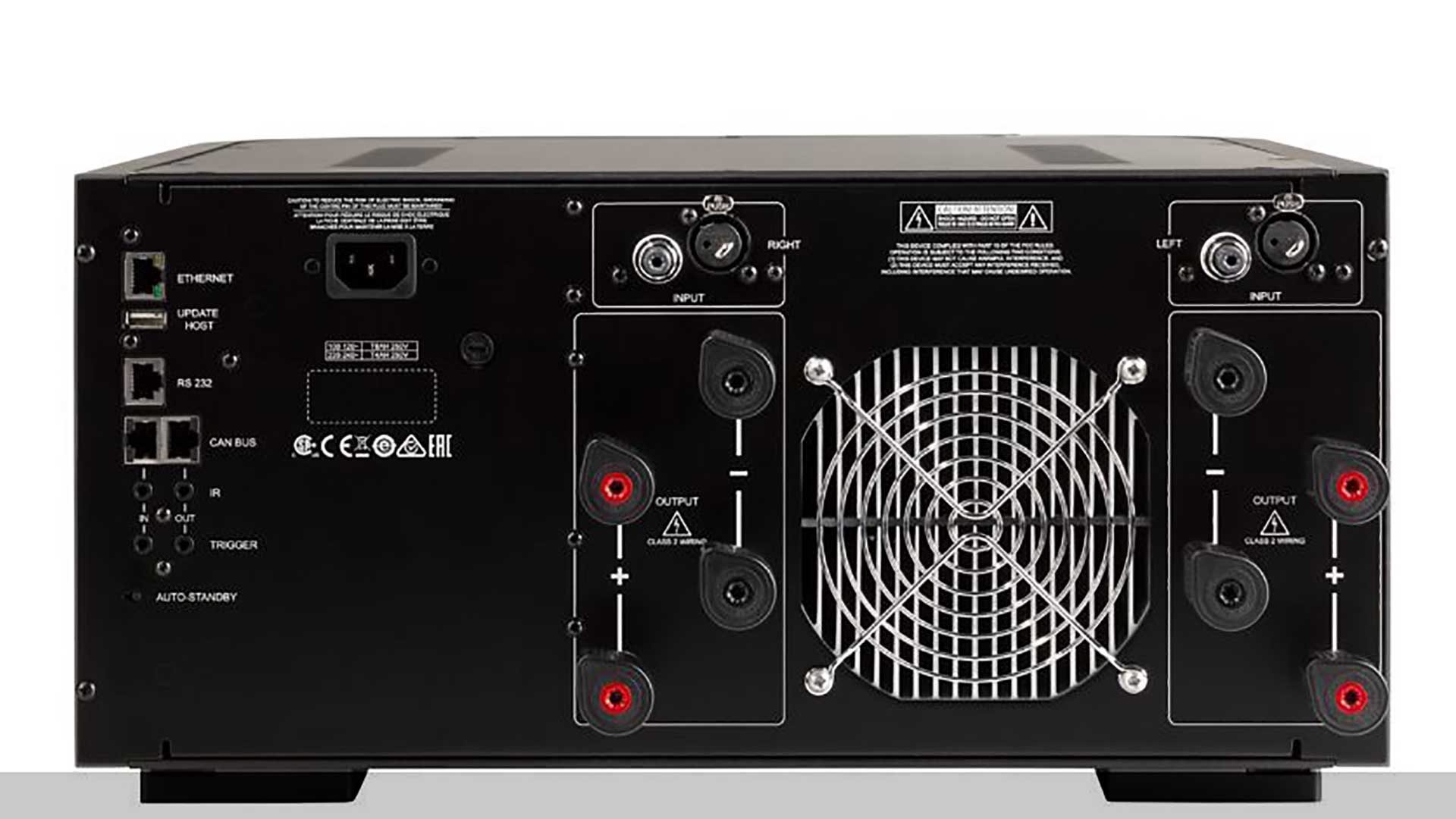
The rear of the Classé Delta Stereo is dominated by that fan I mentioned, either side of which are pairs of multi-way colour-coded speaker terminals that are very sensibly offset so you can use any type of speaker wire and/or connection that you like. Excellent design!
In another example of excellent design, although I might be tempted to regard it as overkill, the terminals have a feature built-in called ‘torque guard’ that works exactly like a torque wrench.
When the terminals are sufficiently tight, further attempts to increase tightness will simply result in a ratchet-like clicking sound. I say overkill because in a lifetime of tightening speaker terminals, I have only ever broken one, and that was because it was a terrible design in the first place. Classé’s ‘torque-guard’ terminals (made by Furutech, as are all the terminals on the Classé Delta components) are, however, totally cool!
Above the fan and speaker terminals are the line inputs. You have the choice of using unbalanced (single-ended, or SE) RCA terminals or balanced terminals, which are industry-standard XLR types. If, for whatever reason, you choose to use the unbalanced inputs, Classé recommends you leave the two pins that otherwise connect the ‘ground’ and ‘negative’ terminals of the XLR input (pins 1 and 3 respectively) in place.
Arrayed down the left-hand edge of the rear panel are an Ethernet jack, a USB connector (simply for firmware upgrades), an RS232 jack, CAN-BUS terminals, jacks for infra-red extenders and d.c. triggers and an automatic standby switch that be set so that the amplifier stays on permanently or switches itself off after it hasn’t detected an audio signal for twenty minutes (and switches itself back on if such a signal is detected).
I was very pleased to find that the Classé Delta Stereo has a very, very comprehensive regime in place to protect the amplifier from damage in the event of a fault condition (usually an external fault, but not always).
Perhaps most importantly, because it’s the most common fault, the Delta Stereo will shut down automatically if you accidentally short-circuit its output terminals with, say, a stray strand of speaker cable. It will also shut down if excessive current is drawn from, say, a low-impedance loudspeaker. It will also shut itself down in the event of there being too much direct current at the speaker terminals – though this is to protect your loudspeakers as much as it is the amplifier itself.
It will also shut itself down if the amplifier becomes too hot, in spite of the fan cooling, plus it will shut down if the cooling fan itself fails, is disconnected, or is unable to spin.
But the Classé Delta Stereo does more than just protect your expensive investment – it keeps an ‘Event Log’ of any faults, so that you (or more accurately, the technician tasked with investigating the fault) has a complete record of what happened.
I rather liked that Classé felt obliged to point out in its Owners Manual that “Protection events are rare and generally occur due to issues that are external to the amp. They should be interpreted positively. The amp is doing what it’s designed to do.” I’d totally agree with this statement. Modern protection circuits do not interfere with sound quality and most of the time sit there doing absolutely nothing at all. But when they do cut in, the fact that they’ve done so will not only save you thousands of dollars – literally – but will also ensure you have a pristine ‘as-new’ amplifier, rather than one that’s been repaired.
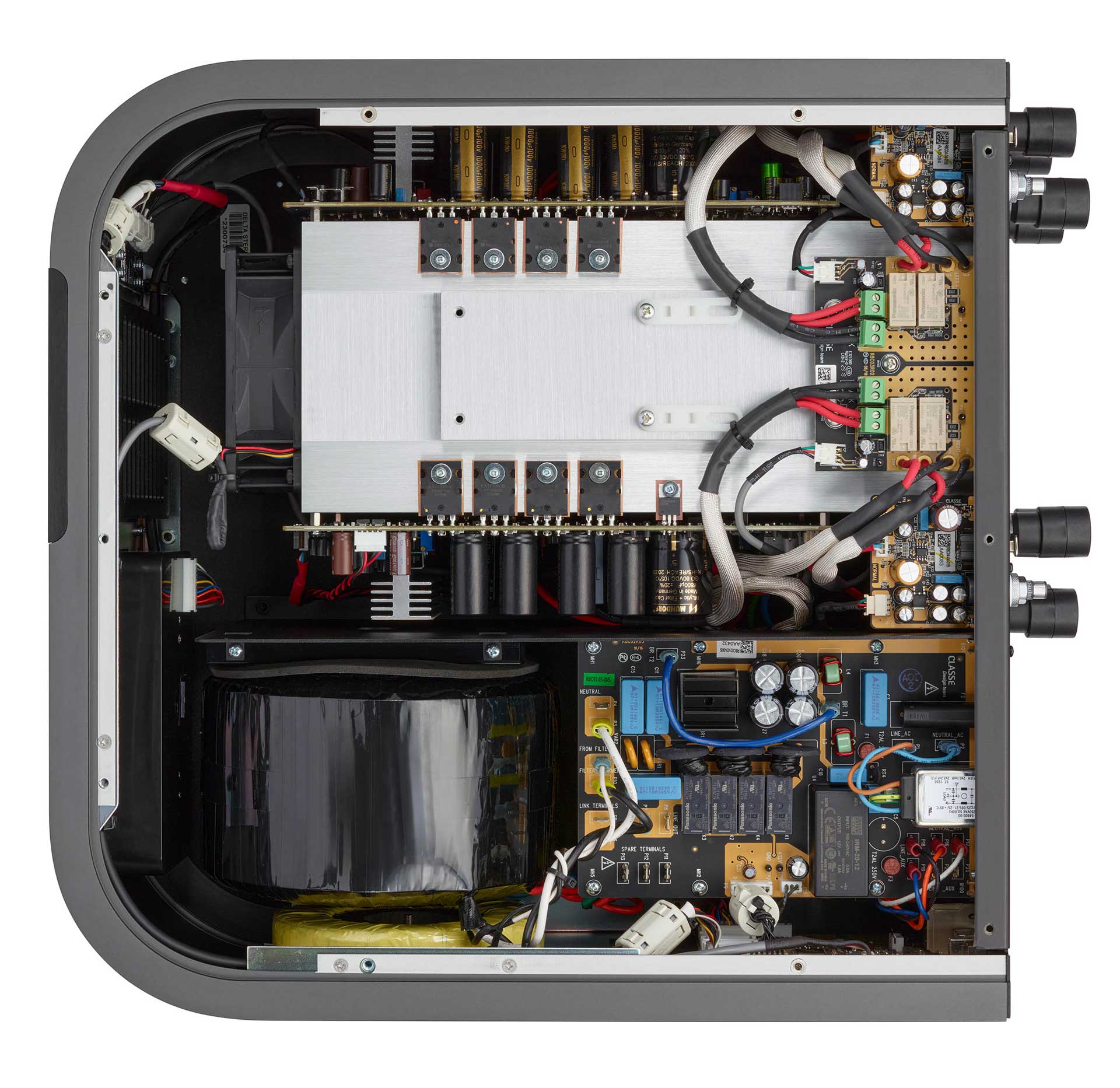
Amplifier classes – Class-A vs Class-A/B
Since the company is actually named after a particular ‘Class’ of amplifier, and the Delta Stereo uses both Class-A and Class-AB circuit topologies, you should really know a little about both these circuit types.
Basically, in order to ‘amplify’ an audio signal we need to use a special type of semiconductor called a transistor which allows you to use a low voltage (the input) to control a much higher voltage (the output). This means that the word ‘amplifier’ is something of a misnomer because an amplifier is not actually making the low voltage signal any bigger, it’s just making a different, higher-voltage signal increase and decrease in perfect unison with a low-voltage signal.
Various different types of solid-state devices have been invented to do this. The most common of these is the bipolar junction transistor (BJT). Another common one is the metal oxide semiconductor field effect transistor, or MOSFET. Classé uses a special kind of MOSFET known as a lateral MOSFET.
Because transistors can only handle a fairly small amount of power, multiple transistors are required to be connected together in order to achieve high power output levels.
When using multiple transistors, they can also be connected together in different ways, called ‘Classes’. We’re only going to deal with three of them here in this review: Class-A, Class-B and Class-A/B.
In a Class-A amplifier, the transistors handle 100 per cent of the audio signal, so they conduct though the full 360 degree sinusoidal waveform. This means that the transistors are working at their maximum capability, which means they draw maximum power and generate maximum heat.
To avoid this, amplifier designers came up with a Class-B design, where two different transistors were used. One transistor handled the first half-cycle of the audio signal from (0 to 180 degrees) and the other handled the second half-cycle, (from 180 degrees to 360 degrees), after which it’d hand the audio signal back to the other transistor.
To avoid this, amplifier designers came up with a Class-B design, where two different transistors were used. One transistor handled the first half-cycle of the audio signal from (0 to 180 degrees) and the other handled the second half-cycle, (from 180 degrees to 360 degrees), after which it’d hand the audio signal back to the other transistor. Whilst-ever one transistor was ‘on’ the other one was ‘off.’ There were two problems with this system. The first was that you had to use one type of transistor for the 0–180° part of the cycle, and a completely different type of transistor for the 180–360° part, and the two different devices have different electronic characteristics.
The second, bigger, problem with this arrangement was that transistors cannot switch instantly, so there was always a ‘glitch’ at the point of switching which created so much distortion this circuit could not be used for amplifying audio signals. This is where Class-AB comes in.
In a Class-AB amplifier, each transistor conducts for more than 180 degrees, so there’s an overlap that effectively eliminates the switching glitch.
If you make the overlap quite small you are able to reduce the cost of the amplifier by having a smaller power supply, less expansive heat-sinking and a reduced number of output transistors. But there will still be a small glitch when the audio signal changes from one transistor to the other.
This can be partially overcome by increasing the size of the overlap, but of course as you increase the amount of overlap you also have to increase the size of the power supply, the area of heat-sinking and add additional output transistors.
The amount of overlap is determined by the amount of bias voltage you apply to the transistors. If you use a low bias, the amplifier will operate in Class-A mode up to a certain set power say, 2-watts, before switching to Class-AB. Let’s call this Amplifier X. If you use a higher bias, as Classé has done with its Delta Stereo, the amplifier will operate up to 12.5-watts in Class-A before switching to Class-AB..
In the scenario described in the previous paragraph, so long as you listen at a volume level that requires these two amplifiers to deliver less than 2-watts, you’d be hearing ‘Class-A’ sound all the time from both amplifiers. If, however, you turn up the volume, so you’re listening at a constant level of 10-watts, Amplifier X would be operating in Class-AB mode while the Classé Delta Stereo would still be operating in Class-A mode.
We should note that there is some disagreement about what constitutes a ‘Class-A’ circuit design—even amongst amplifier designers. Some designers claim that the only ‘true’ Class-A circuit is one where only a single semiconductor is used to produce the audio signal, and that there can be no ‘sharing’ of the audio signal between different semiconductors.
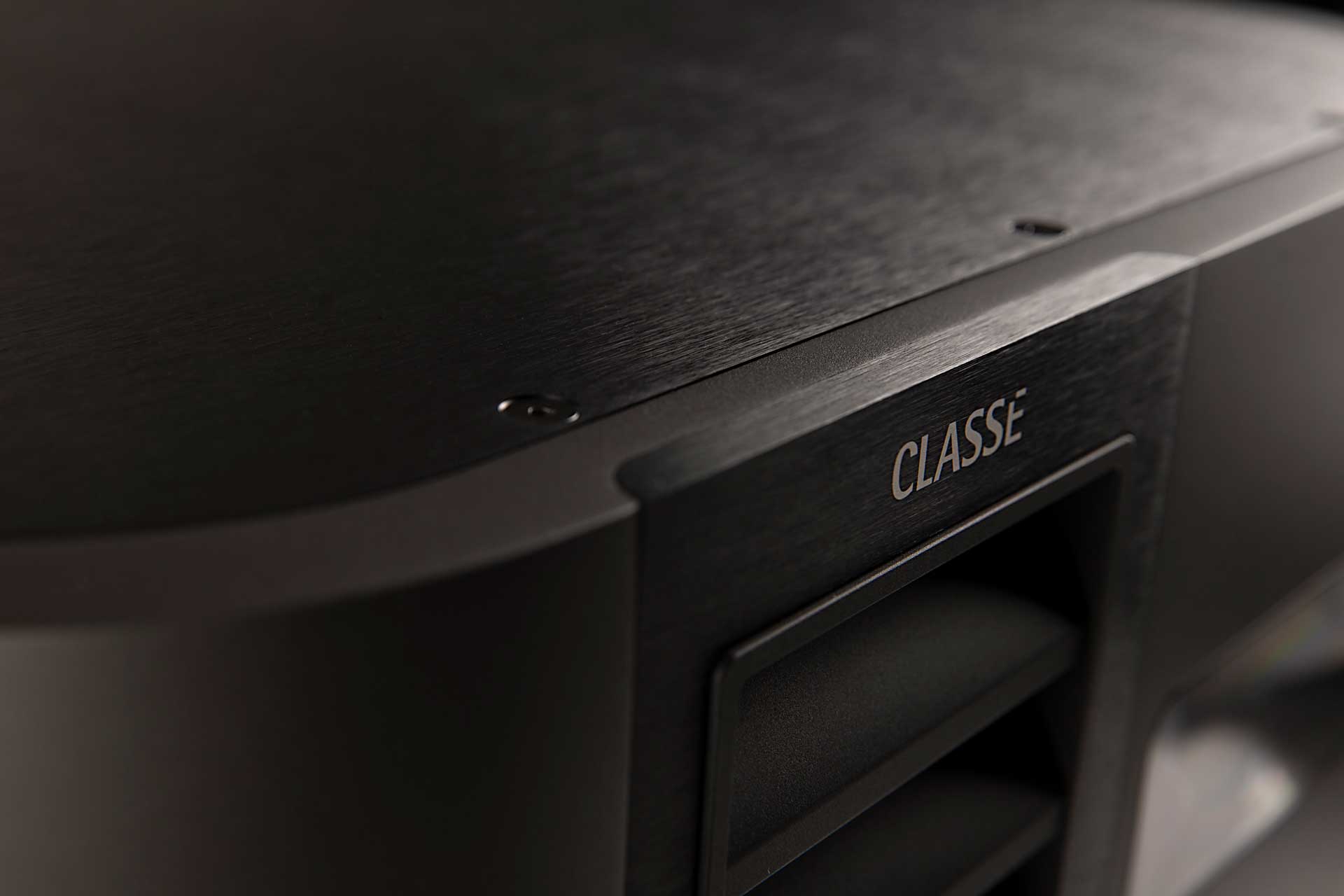
Listening sessions
I was right in the middle of reading the book “Snakes! Guillotines! Electric Chairs!” written by Dennis Dunaway who was, with Vince Furnier, a founding member of the Alice Cooper band (Furnier changed his name by deed poll to Alice Cooper just so it was the same as the band) when the Classé Delta pre/power combo landed on my doorstep, so it seemed only appropriate that I start by spinning a few Alice Cooper classics.
One of the first was Be My Lover, from the band’s 1971 “Killer” album. This is an absolutely fabulous track (if you can get past the fact that the thematic is the one Lou Reed used when he wrote Sweet Jane for the Velvet Underground, and the structure is a copy of one the Rolling Stones made famous – 2.31 in if you’re interested).
It’s a perfect example of the complexity of the band’s arrangements, and the undeniable musical talents of the various members. Alice Cooper seems to be remembered more for biting the head off a chicken (which he didn’t do, BTW, at least according to Dunaway) and the band for its theatrics, than for the music.
Listen to the music minus the theatrics and you’ll be impressed. Dunaway’s bass lines are interesting, Neal Smith’s drumming is amazing as are the lead and rhythm guitar contributions. The self-referencing lyric is also a step above that of most bands of their ilk, and that of a good many highly-regarded songwriters as well. Listening via this Classé combo made that all transparently clear.
One problem I always had with Alice Cooper was that their song titles often obscured just how good the songs were. A classic example is Killer’s Dead Babies, which contains the lyric “Daddy is an agrophile in Texas/ Mommy’s on the bar most every night/ Little Betty’s sleeping in the graveyard / Living there in burgundy and white.” The bass intro to this track is sheer genius, and again the Classé combo made this clear.
And listen to the subtlety of the hi-hat sizzle! Then just listen to the title track (and the closer) and you’ll hear why Frank Zappa was such an Alice Cooper fan. This is just great music, great sound, great recording technique. Admittedly the Classé combo makes the double-tracking more obvious than you’ll hear from lesser amplifiers, but this only seems to add to the effect. You’ve gotta love the Dr Who close-out too!
And if you’re wondering why Alice Cooper would choose to close with Killer, the opener, Under My Wheels, will show you why. Sure it’s a classic rock track, but with a precision that’s mind-blowing despite the “everything but the kitchen sink” approach to the sonics. Naturally I finished my session with School’s Out; how could I not? Which meant I had to crank the volume to 11 (couldn’t resist the Spinal Tap reference, but in point of fact, it was more like –9 on the Classé Pre’s display.)
Although School’s Out is anthemic, and the childrens’ voices inspired, only Alice Cooper could have included the line “We got no class / And we got no principles / And we got no innocence / We can’t even think of a word that rhymes.” ( Dunaway goes into detail about this lyric in his book).
Since I’d been thinking of Zappa while listening to Alice Cooper, I decided to use the Classé Pre and Delta Stereo combo to spin up some of his classics as well, starting with ‘Hot Rats’. The opening instrumental, Peaches En Regalia, is wonderfully scored, so much so that you almost miss that it also has a great melody.
What you can’t miss is the incredible sense of fun, and it’s this sense of fun that’s not only captured exactly but also amplified by the Classé duo. The follower, Willie the Pimp, not only features a blazing, bafflingly complex (and long!) guitar solo by Zappa but also the incredible electric violin sound of Sugarcane Harris (whose sound you can compare to that of Jean-Luc Ponty’s electric on the closer track) and the incomparable rhythm section of John Guerin (drums) and Max Bennett (bass).
Both musicians were from jazz backgrounds and both went on to play with Joni Mitchell on ‘Court and Spark’, ‘Hissing of Summer Lawns’ and ‘Hejira’. (Indeed Guerin and Mitchell were once an item, and the song Hejira is her version of their break-up.)

I had not listened to ‘Hot Rats’ for a while (whereas ‘Apostrophe’ is an almost-weekly listen) and was actually surprised at how modern and jazzy it sounded. Indeed if it were released today anonymously I am certain that it would shoot rapidly up the avante-guard jazz charts to number 1.
It would also become a favourite with audiophiles on the basis that it’s so wonderfully recorded that it’s a great system-tester. Listen particularly to Ian Underwood’s sax sound on Gumbo Variations, where he does his best Archie Shepp imitation.
This Underwood contribution references why Zappa called the album (which was his first solo effort, by the way), Hot Rats. “On his recording of The Shadow of Your Smile [Shepp] plays a solo that sounded to me like an army of pre-heated rats screaming out of his saxophone,” said Zappa.
Yep, this is music from the 60s and 70s, but at least one musician who was producing hits back then is still producing them, so I thought I’d bring my auditioning into the 21st century by re-listening to Bob Dylan’s ‘Rough and Rowdy Ways’ from just last year.
Despite the fact I think that he’s really taking the piss on most of the tracks (My Own Version of You being my No 1 exhibit) it’s still an extraordinarily listenable album. Dylan famously told The New York Times “The lyrics are the real thing, tangible, they’re not metaphors.” But we all know what Dylan thinks of interviews.
Nonetheless, whatever I think of the lyrics, the music on Rough and Rowdy Ways is great and the production values are very high and the Classé Delta combo delivered the depthy richness of the soundfield in a way that was completely gratifying. And is it just me, or did the Classé combo make Dylan’s voice sound better than I’ve ever heard it before?
But if you want to hear production values, you can’t go past auditioning these Classés with Amaarae’s debut long-player ‘The Angel You Don’t Know’ (do, however, be prepared for some head-snapping – and speaker-bending – sound effects). Although her music is often called ‘afro-pop’, the fact that every single one of the fourteen tracks on TAYDK is completely different makes this an ineffective stylistic definition. But if it’s a genre-bender of an album, it’s also a toe-tapping, finger-snapping sonic revelation of an album, from her multi-tracked, echoed vocals to the depth-charged bass and take-no-prisoners percussion.

Verdict
The Classé Pre and Classé Delta Stereo honour their brand name in every one of its meanings. Sure, the circuitry is technically Class-A, but the sound itself definitely rates an ‘A’ in its class, so the amplifiers are ‘Class A’ in that sense as well.
And if I can twist the pronunciation a little further, these amplifiers are most definitely ‘classy’ as well, as you can certainly see for yourself from the photos in this review and will be able to hear for yourself when you audition them.
Test Lab results
Newport Test Labs measured the power output of the Classé Stereo power amplifier as 272-watts into 8Ω, both channels driven, at all three test frequencies, which means it will produce this output at any frequency right across the audio frequency band and, as you can see, it’s a power level that is handily higher than Classé’s own specification of 250-watts per channel.
The Classé Stereo was able to double its rated power when load resistance was halved (the theoretical ideal) when Newport Test Labs used a 1kHz test signal, but came up a little shy at 20Hz, where it delivered 488-watts per channel both channels driven and at 20kHz, where it delivered 475-watts per channel, both channels driven.
As you can see from the tabulated results, the Classé Stereo will deliver more than 500-watts when only a single channel is driven, so it would seem to be the power supply that’s being taxed here, rather than the output devices. Note, too, that these differences in output power are actually miniscule, as evidenced by the dBw figures (which are rounded to the nearest decimal place) so that 488-watts and 500-watts both come in at 26.9dBw, while the 20kHz figure is just 0.1dB behind, at 26.8dBw. In other words, there’s no practical difference and there certainly would not be any audible difference.
The frequency response of this Classé Delta duo will vary depending on whether you put the Delta Pre into its ‘Bypass’ mode, because if you don’t the signal will go into and out of the digital domain in order to enable the Delta Pre’s advanced tone control and PEQ functions. If this mode isn’t enabled, the frequency response of this duo extends from less than 1Hz to 412kHz –1dB, and less than 1Hz to 802kHz –3dB, which is obviously an outstandingly good result as well as being an extremely wideband one.
If, however, you do not use the Bypass mode, the low-frequency response will remain the same, at less than 1Hz, but the high frequency response will be 1dB down at 47kHz and 3dB down at 81kHz. Although this means the high-frequency response is significantly curtailed, in fact this response is better than all Class-D amplifiers and a good many linear Class-A/B amplifiers can manage to deliver. And normalised, it means the frequency response is <1Hz – 47kHz ± 0.5dB.
The frequency response across the audio band is obviously much flatter again, of course, as you can see in Graph 1, where it’s literally ruler-flat from 10Hz up to 4kHz before it starts a very slow descent to be 0.1dB down at 10kHz and 0.4dB down at 20kHz, putting the normalised audio band frequency response at 20Hz to 20kHz ± 0.2dB.
Graph 2 shows the frequency response when the Classé Delta Stereo is driving an 8Ω non-inductive load (black trace) and a load that simulates the load that would be presented by a typical two-way bass reflex bookshelf loudspeaker (red trace). The vertical scale has been dramatically expanded because otherwise the two traces would overlay each other. This is superb performance and means the sound of the Classé Delta Stereo power amplifier will be exactly the same, no matter which speakers you choose to use in conjunction with it. It also means that the Delta Stereo will be able to control the back-emf from even the largest bass drivers.
This is evidenced by the output impedance of just 0.01Ω, which in turn translates to a damping factor (DF) of a whopping 800!
Channel separation was excellent, as you can see from the charted results, with the Classé duo returning separation figures of 117dB at 20Hz, 108dB at 1kHz and 77dB at 20kHz. Inter-channel phase was equally good, with the Classé duo returning figures of 0.01° at 16Hz, 0.08° at 1kHz and 1.53° at 20kHz. Channel balance was imperceptibly different, at 0.003dB.
It’s worth re-iterating that all these results were obtained with both pre and power amplifiers in circuit, so cannot be compared with the specification for each individual component.
Graph 3 shows the effect of the bass and treble tone controls on the frequency response. You can see there’s exactly 6dB of boost (black trace) and 6dB of cut (red trace) at low frequencies. You can also see that the boost and cut action is nicely shelved, which shows excellent design. Treble boost is also properly shelved. Although there’s 6dB of cut at 20kHz, boost comes in a little less than this. If you use either of these controls, there will be minimal effect on the midrange, as you can see – less than 1dB.
If you look at Graph 4 above, which shows the effect of the tilt controls on frequency response when set for values of 200Hz and 2kHz, which approximate the turnover points for many bass and treble tone controls, you can immediately see the difference between bass and treble tone control action and tilt control action, notwithstanding the obvious one, which is that if you use a tilt control to increase bass, you will simultaneously reduce treble, as is made obvious by the traces on Graph 4.
You can see that again you get 6dB of boost and cut at the frequency extremes, but in this case the high-frequency shelving action is rather better than it is if you use the tone controls to adjustt the high-frequency response.
The tilt control circuitry on the Classé also offers far more options for tonal adjustment, some of which are shown in Graph 5. This graph shows the effect of 200Hz and 2kHz settings at maximum boost and cut (dark blue and light blue traces) and the effect of the 100Hz and 4kHz settings (red and green traces).
Classé’s five-band PEQ filter is a very powerful tool, as you can see from the graphs. On Graph 6, Newport Test Labs has shown the effect of adjusting Q between the highest Q offered by the Classé (Q=20) and the lowest (Q=1) for two frequencies (100Hz and 5kHz), and also the accuracy of the Filter Gain circuit, by setting the filter at 100Hz for –12dB and that for the 5kHz filter at –9dB.
You can see that both the centre frequencies and the Filter Gain settings are exactly as programmed. An excellent result. You can also see how the value of Q you use will affect frequencies you may not want to affect. (Note that although the red trace shows the –12dB and –9dB values exactly, the black trace does not due to the FFT analyser settings used to create the graph – the Classé does attenuate the signal correctly, to –12dB and –9dB).
Graph 7 shows all five of the Classé’s PEQ filter settings in action, and again you can see the accuracy of the circuitry, with the filter centre-frequencies exactly as programmed, at 50Hz, 200Hz, 1kHz, 5kHz and 15kHz. You can also see the accuracy of the Filter Gain control, this time for positive values as well. For each of the five filters, the red trace shows the +3dB Filter Gain setting and the black trace the –6dB Filter Gain setting. (Q=5 in all cases.)
Graph 8 shows distortion and noise at an output of one watt into 8Ω. The first thing to note is the extremely low noise floor – right down at –130dB across almost the entire audio band, with very little low-frequency mains-related noise visible at the extreme left of the graph. As for the distortion components, they’re all low-order and also more than 100dB down, which would render them completely inaudible. There’s a second harmonic at –102dB (0.00079%), a third at –105dB (0.00056%), a fourth at –112dB (0.00025%), a fifth at –118dB (0.00012%) and a seventh at –124dB (0.00006%). This is superb performance, to say the least.
Graph 9 shows distortion and noise at one watt into 4Ω and you can see that the performance is virtually unchanged from that into an 8Ω load. This is an excellent result and one that it’s rare to see: few amplifiers are as load-independent as the Classé Delta Stereo. As with the frequency response result, it means the Classé Delta Stereo will ‘sound’ the same no matter what speakers you use, giving you access to a far wider speaker choice.
Graph 10 shows performance into 8Ω when power output is increased to 20-watts per channel. You can see that the noise floor has dropped down to –140dB, that there’s still very low-frequency power supply noise and that the levels of the distortion components has again remained almost the same, despite the dramatically increased power output.
The main difference is the appearance of some higher-order high-frequency distortion components, though it’s arguable that these were always there, simply not visible above the noise floor at lower power output levels. In any case, you can see that apart from the first three harmonic distortion components, which are sitting at levels of –100dB (0.001%), –104dB (0.00063%) and –114dB (0.00019%) respectively, all the others are more than 120dB down (0.0001%).
Graph 11 again shows the exceptional load-independence of the Classé Delta Stereo, in that it’s almost identical to the performance at 20-watts into 8Ω, despite being measured at the same power output, but into a 4Ω load.
Intermodulation distortion at an output of one watt into 8Ω (Graph 12) was exceptionally low, as you can see. Alongside the twin test signals, at 19kHz and 20kHz, there are only two sidebands, one at 18kHz that’s 108dB down (0.00039%) and one at 21kHz that’s 106dB down (0.00050%). The unwanted difference signal down at 1kHz is extremely low in level, at around –115dB (0.00017%).
Graph 13 shows intermodulation distortion at an output of 20-watts into 8Ω and I don’t think I have ever seen a result as good as the one returned by this Classé Delta duo. The two sidebands are sitting almost at the same level they were for the one-watt test, and the two added sidebands are both more than 125dB (0.00005%) down. The regenerated difference signal at 1kHz, which I would normally have expected to increase in level, has actually dropped in level, to around –117dB (0.00014%), though the added power means that it’s been joined by a signal at 3kHz, that’s at –123dB (0.00007%).
Graphs 14 and 15 show distortion at output levels of 12-watts and 13-watts respectively into 8Ω loads. Since Classé says the Delta Stereo amplifier switches from Class-A mode to Class-B mode at an output of 12.5-watts, the two graphs compare distortion for the two modes. I must admit I was expecting to see rather more of a difference: the only one I can see is that the odd-order harmonics seem to be overall a little lower in level when the amplifier is in Class-A mode, which I would expect would have a beneficial effect on sound quality.
As you should already have gathered from looking at the noise floors in the various graphs of power output, the Classé Delta duo was exceptionally quiet. Newport Test Labs measured the unweighted signal-to-noise ratio at 86dB referenced to an output of one-watt, an excellent figure that improved to an even-better figure of 91dB with A-weighting. Referred to rated output, the signal-to-noise ratios were measured by the lab at 108dB (unweighted) and 114dB (A-weighted).
Given the frequency response measured by Newport Test Labs, I was expecting square waves put through this Classé pair to look clean and I was not disappointed. The 100Hz and 1kHz square waves are so good they look like they came straight from the signal generator (the slight glitch you can see on the 1kHz wave is actually an artefact introduced by the storage mode of the digital oscilloscope).
The 10kHz square wave is one of the best I have seen from any audio amplifier in that it, too, looks like it came straight from a signal generator – you have to look very closely at it indeed to see the slight rounding where the ‘vertical’ meets the ‘horizontal’.
Square wave performance into a capacitative load was outstandingly good. There’s just a one-eighth wave-height overshoot followed by a few cycles of very quickly damped ringing and that’s it. This is a rock-solid-stable amplifier capable of driving any loudspeaker, including extreme electrostatics.
I have never been so impressed by the performance of any pre-power amplifier combination – or integrated amplifier – as I was by the performance of the Classé Delta Pre and Classé Delta Stereo. Their performance was simply superb, to the point of being awe-inspiring.

Where are Classé amplifiers made?
Where products are made is becoming an increasingly important question for many audiophiles, particularly here in Australia.
Originally manufactured in Canada by Classé itself, the brand continued to be manufactured in that country until it was purchased by Bowers & Wilkins in 2001, which moved production to China. However, when B&W was in turn purchased by EVA Automation (in 2016) it put Classé into hibernation, which included dispensing with the services of Classé’s president, David Nauber, despite the fact that the company was in the process of developing a brand-new model series – Delta.
In 2018 Canadian company Sound United (which already owned Marantz, Denon, Polk and Definitive Technology) purchased both B&W and Classé from EVA and one of its first actions was to hire David Nauber to bring Classé out of mothballs and finalise the development of the Delta Series models.
Its next move was to move production of the Delta Series from China to Japan, making use of that country’s famous Shirakawa Audio Works manufacturing facility, where it was already manufacturing high-end Denon and Marantz products.
“Shirakawa had the most comprehensive manufacturing and testing capability that I’d ever seen,” says Nauber. “Everything from how a board gets made, to how a product gets assembled, to how the packaging is tested—it was beyond anything that we’d ever done.”
You may also be intrigued (as I was) by how closely Classé’s Delta Series components resemble the Michi pre and power amplifiers made by Rotel. The resemblance was so uncanny I even wondered if they’d been made in the same factory. The answer, of course, was ‘No!”. Rotel makes its Michi amplifiers in China, whereas Classé makes its Delta amplifiers in Japan. A very important difference.
But then I wondered about the chicken and the egg. Which came first? Who copied who? For the answer to that you only have to look back to Classé’s CA-M400, CA-2100, CA-2200, CA-3200 and A-5200 which Classé introduced back at the turn of the century, which look almost identical to the Delta (but used different internal circuitry). So although the Delta Series itself is new for Classé, the company came up with this distinctive look long before Rotel ever did.
Manufacturers' specifications
Classé Delta Stereo Power Amplifier
Frequency Response: 1Hz–650kHz (-3dB)
Power Output: 250 watts per channel (8Ω); 500-watts per channel (4Ω); 350-watts per channel (2Ω)
THD: <0.0007% at 1kHz
Input Impedance: 82kΩ
Voltage Gain: 29dB
SMPTE IMD: <0.0018%
CCIF IMD: <0.004%
Signal-to-Noise Ratio: 120dB
Crosstalk: 107dB (1kHz)
Slew Rate: 75V/μs
Damping Factor: 850 (1kHz)
Dimensions (WDH): 444×492×222mm
Weight: 46.4kg
Classé Delta Preamplifier
Line Inputs
Frequency Response: 1Hz–2MHz (–3dB)
THD: <0.0004% (1kHz)
IMD: <0.001%
Maximum Line Input Level: 9Vrms/4.5Vrms (Bal/SE)
Signal-to-Noise Ratio: 133dB (A-wtd)
Crosstalk: 140dB (1kHz)
Gain Range: –93dB to +14dB
Channel Matching: 0.05dB
Input Impedance: 50kΩ
Output Impedance: 200/50Ω (Bal/SE)
Max Output: 18//9Vrms (Bal/SE)
Phono Inputs
RIAA Deviation (20Hz-20kHz): <0.2dB
Selectable Load for MM: 50, 100, 150, 200, 250, 300, 350, 400, 450pF
Selectable Load for MC: 7.5, 10, 33, 50, 82, 100, 330Ω, 1kΩ
Gain (High/Low): 41.5dB/60dB
S/N Ratio (High/Low): 93dBA/74dBA
Digital Inputs
USB-B: 32, 44.1, 48, 88.2, 96, 176.4, 192, 352.8, 384kHz, DSD64, DSD128, DSD256
File Types: WAV, AIFF, ALAC, FLAC, WMA, AAC, MP3, OGG-VORBIS, DSD64, (DoP)
SPDIF: PCM 32k, 44.1k, 48k, 88.2k, 96k, 176.4k, 192k / DSD64
Dimensions (WDH): 444×449×121mm
Weight: 13.5kg
Australian Hi-Fi is one of What Hi-Fi?’s sister titles from Down Under and Australia’s longest-running and most successful hi-fi magazines, having been in continuous publication since 1969. Now edited by What Hi-Fi?'s Becky Roberts, every issue is packed with authoritative reviews of hi-fi equipment ranging from portables to state-of-the-art audiophile systems (and everything in between), information on new product launches, and ‘how-to’ articles to help you get the best quality sound for your home.
Click here for more information about Australian Hi-Fi, including links to buy individual digital editions and details on how best to subscribe.
